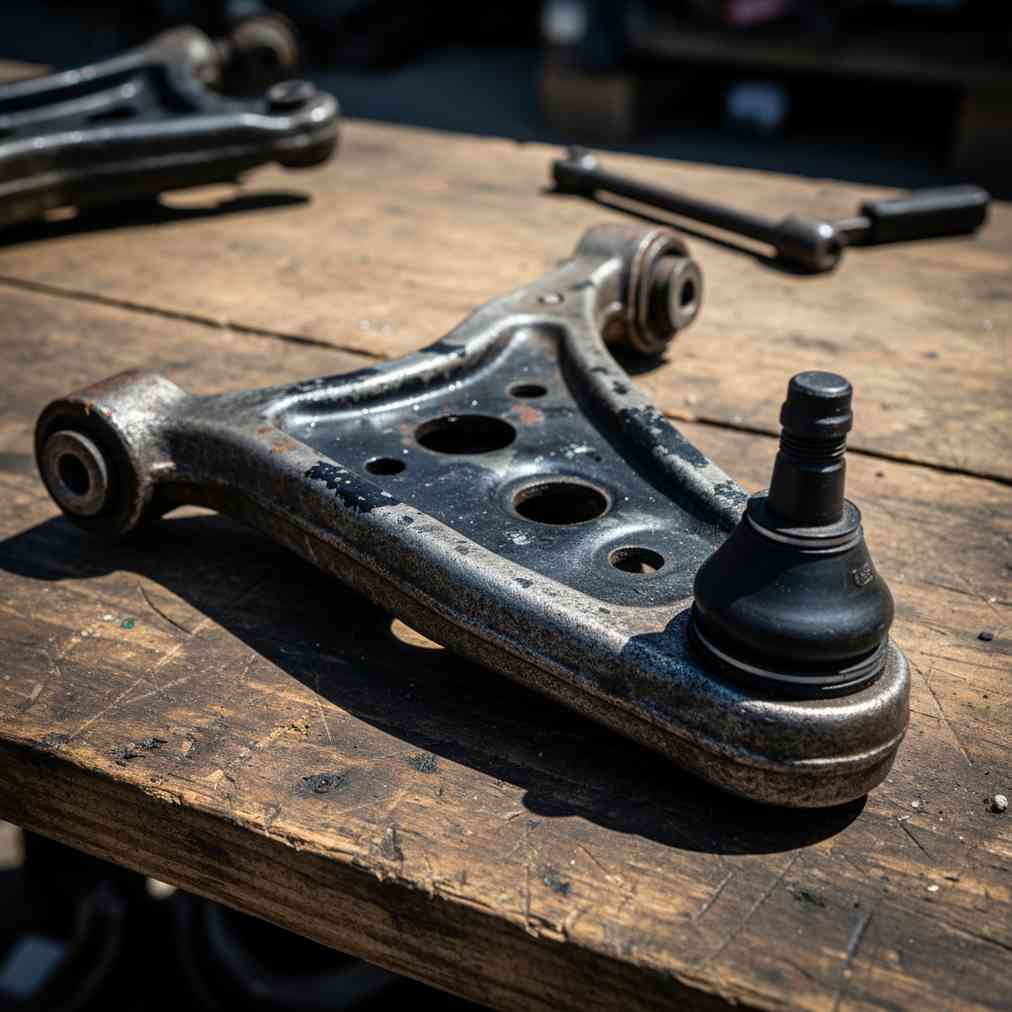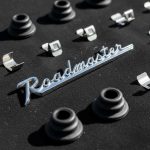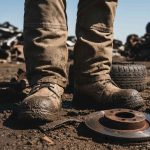Why Consider Used Suspension Components?
When suspension components fail, the cost of new OEM parts can be staggering, often running into hundreds or thousands of dollars for a complete repair. Used suspension components offer a practical alternative, providing significant cost savings while maintaining vehicle safety when properly inspected and sourced. For budget-conscious car owners, classic car enthusiasts, and those dealing with discontinued parts, salvage yards near you can be a goldmine of quality components.
The value proposition is compelling: used parts can cost 30-70% less than new ones, making vital repairs accessible to more vehicle owners. Additionally, reusing suspension components supports environmental sustainability by reducing waste and the resource consumption associated with manufacturing new parts.
Understanding Suspension Component Roles and Functions
Before diving into the buying process, it’s crucial to understand what each suspension component does and how failure affects vehicle safety and performance.
Control Arms: The Workhorses of Suspension
Control arms are the primary connection between your vehicle’s frame and wheels, supporting the vehicle’s weight while allowing controlled wheel movement. These components are essential for:
- Supporting vehicle weight and absorbing road forces
- Enabling steering while allowing vertical wheel movement
- Maintaining proper wheel alignment
- Housing critical components like ball joints and bushings
Most vehicles have one or two control arms per wheel, and according to suspension fundamentals guides, they’re considered wear items that require periodic inspection and eventual replacement.
Shocks and Struts: Controlling Movement
Shock absorbers and struts manage spring movement and prevent excessive bouncing after hitting bumps. These components are critical for:
- Maintaining tire contact with the road surface
- Controlling body roll during turns
- Improving braking stability
- Providing ride comfort
Industry data shows that shocks and struts typically require replacement every 50,000-100,000 miles, depending on driving conditions and vehicle usage.
Ball Joints and Bushings: Critical Connection Points
Ball joints serve as mechanical pivot points, allowing controlled movement in suspension and steering systems. Meanwhile, bushings are rubber or synthetic components that absorb vibrations and maintain proper alignment where suspension parts connect to the frame.
Where to Find Quality Used Suspension Components
Sourcing used suspension parts requires knowing where to look and what to avoid. The best sources combine accessibility with reliability:
Auto Salvage Yards
Local salvage yards remain the gold standard for used suspension components. They offer several advantages:
- Hands-on inspection before purchase
- Direct access to donor vehicle history when available
- Professional evaluation by yard staff
- Return policies for defective parts
- Competitive local pricing
Online Marketplaces and Specialized Vendors
Online platforms like eBay and specialized auto recyclers have expanded access to hard-to-find components. However, buying online requires extra caution:
- Request detailed photos from multiple angles
- Verify seller reputation and return policies
- Confirm part numbers and compatibility
- Understand shipping costs and timeframes
When dealing with older or rare vehicles, you might find yourself exploring options like OEM parts availability at junkyards, which can be especially valuable for discontinued components.
Comprehensive Inspection Guide for Used Suspension Parts
Thorough inspection is the cornerstone of safely buying used suspension components. Each component type requires specific evaluation criteria to ensure safety and longevity.
Control Arm Inspection Protocol
Control arms endure tremendous stress and must be carefully evaluated for structural integrity:
| Inspection Point | What to Look For | Pass/Fail Criteria |
|---|---|---|
| Structural Integrity | Cracks, bends, deformation | Must be fracture-free and straight |
| Rust and Corrosion | Surface rust vs. structural compromise | Light surface rust OK, no holes through metal |
| Mounting Points | Frame connection areas | No cracks, bends, or accident damage |
| Ball Joint Bosses | Threaded areas and attachment points | Clean threads, no damage or distortion |
“A thorough inspection of your suspension can help prevent uneven tire wear, unpleasant noises around turns or over bumps, and even breakdowns caused by broken suspension components,” according to automotive service professionals.
Ball Joint Evaluation Techniques
Ball joint inspection requires both visual and physical testing to ensure safe operation:
- Boot Condition: Examine the rubber boot for cracks, tears, or grease leakage
- Play Testing: With the wheel off the ground, grip the tire at 12 and 6 o’clock positions and check for movement
- Pry Bar Test: Use a pry bar between the control arm and steering knuckle to check for vertical play
- Visual Inspection: Look for rust, corrosion, or damaged threads
According to front-end inspection guidelines, any noticeable play in ball joints indicates wear and requires replacement.
Bushing Assessment Criteria
Bushings are often the most overlooked suspension component, yet their condition significantly affects ride quality and alignment:
- Visual Signs of Failure: Cracks, tears, deformation, or crumbling rubber
- Physical Testing: Gentle pry bar pressure to check for excessive movement
- Hardiness Test: Squeeze the rubber – it should be pliable, not hard or brittle
- Noise Correlation: Failed bushings often cause clunking or knocking sounds
Shock and Strut Inspection Standards
Shocks and struts are complex hydraulic components that require careful evaluation:
| Component | Critical Check Points | Immediate Rejection Criteria |
|---|---|---|
| Shock Body | Fluid leaks, dents, corrosion | Any fluid leakage, bent piston shaft |
| Piston Rod | Straightness, surface condition | Bends, scoring, or chrome damage |
| Mounts | Rubber condition, hardware integrity | Cracked rubber, missing hardware |
| Function Test | Smooth compression/extension | Rough movement, no automatic return |
The comprehensive guide to suspension components emphasizes that any fluid leakage from shocks or struts indicates internal seal failure and the component will not pass safety inspections.
Safety Specifications and Compatibility Verification
Ensuring used suspension components meet safety specifications requires attention to multiple factors beyond visual inspection.
OEM Specifications and Tolerances
Original Equipment Manufacturer (OEM) specifications provide the baseline for acceptable wear limits and performance standards:
- Ball Joint Play Limits: Typically 0.050″ vertical and 0.125″ horizontal maximum
- Control Arm Tolerance: No visible deflection under load testing
- Bushing Compression: Should maintain 75% or more of original thickness
- Shock Damping: Must provide consistent resistance through full stroke
Part Number Verification and Cross-Referencing
Accurate part identification prevents costly mistakes and ensures proper fitment:
- Use your vehicle’s VIN for precise part number lookup
- Cross-reference donor vehicle options and equipment codes
- Check for manufacturer supersessions and design updates
- Verify left/right side specific components
- Confirm compatibility with vehicle trim level and options
This process is similar to buying other critical safety components from junkyards, where precision in part identification is essential.
Donor Vehicle History Considerations
Understanding the donor vehicle’s background helps assess component reliability:
- Service Records: When available, review maintenance history
- Mileage Verification: Lower mileage generally indicates less wear
- Accident History: Avoid components from vehicles with front-end damage
- Recall Status: Check for open recalls or service campaigns
- Climate Factors: Consider salt exposure and environmental conditions
Step-by-Step Buying Process
Successfully purchasing used suspension components requires a systematic approach that prioritizes safety and value.
Pre-Purchase Preparation
- Identify Exact Needs: Determine which components require replacement
- Research Part Numbers: Use VIN lookup or consult service manuals
- Set Budget Parameters: Include installation and alignment costs
- Gather Tools: Bring flashlight, pry bar, and measuring tools for inspection
- Plan for Transportation: Ensure you can safely transport purchased parts
On-Site Evaluation Process
When inspecting components at a salvage yard or pickup location:
- Photograph Everything: Document condition for future reference
- Test Function When Possible: If connected, test shock compression/extension
- Check All Related Components: Evaluate the entire assembly, not just individual parts
- Verify Hardware: Ensure all bolts, nuts, and brackets are present
- Ask About Return Policy: Understand terms for defective or incorrect parts
Negotiation and Purchase
Effective negotiation can further reduce costs while ensuring quality:
- Bundle Related Components: Buy complete assemblies for better pricing
- Point Out Minor Defects: Use cosmetic issues as negotiation leverage
- Consider Volume Discounts: Purchase multiple components together
- Confirm Warranty Terms: Understand coverage period and conditions
- Request Installation Hardware: Ask for bolts and brackets if not included
Installation Considerations and Professional Requirements
Installing used suspension components requires careful attention to proper procedures and safety protocols.
Critical Installation Steps
Professional installation ensures safety and optimal performance:
- Torque Specifications: Follow manufacturer’s exact torque requirements
- Thread Preparation: Clean and properly prepare all threaded connections
- Alignment Check: Professional alignment is mandatory after suspension work
- Road Test: Comprehensive testing under various driving conditions
- Break-in Period: Allow components to settle before final evaluation
When to Seek Professional Installation
Certain suspension work requires professional expertise, as outlined in suspension repair guidelines:
- Strut assembly replacement on vehicles with integrated steering
- Ball joint pressing requiring specialized tools
- Alignment-critical components affecting safety
- Components requiring special torque sequences
- Work involving spring compression or removal
Common Mistakes to Avoid When Buying Used Suspension Parts
Learning from common pitfalls can save money and prevent safety hazards:
| Common Mistake | Potential Consequence | Prevention Strategy |
|---|---|---|
| Buying without proper inspection | Premature failure, safety risk | Always inspect thoroughly or hire professional evaluation |
| Incorrect part identification | Poor fitment, handling issues | Verify part numbers and vehicle compatibility |
| Ignoring related component wear | Premature new part failure | Replace related wear items simultaneously |
| Skipping professional alignment | Tire wear, poor handling | Schedule alignment immediately after installation |
| Mixing different wear states | Uneven performance, additional wear | Replace suspension components in pairs when possible |
Cost-Benefit Analysis: Used vs. New Suspension Components
Making informed decisions requires understanding the true cost comparison between used and new parts:
Financial Considerations
- Initial Savings: 30-70% cost reduction compared to new OEM parts
- Labor Costs: Installation expenses remain the same regardless of part condition
- Warranty Differences: New parts typically offer longer warranty coverage
- Replacement Frequency: Used parts may require more frequent replacement
- Related Repairs: Factor in costs for complementary component replacement
When Used Parts Make Sense
Certain situations strongly favor used suspension components:
- Older vehicles where total repair costs approach vehicle value
- Rare or discontinued parts with limited new availability
- Budget constraints requiring immediate safety repairs
- Temporary repairs before vehicle replacement
- Classic car restoration requiring original components
If you’re working on an older vehicle and considering multiple used components, you might also explore other high-value used auto parts to maximize your budget.
Maintenance and Longevity of Used Suspension Components
Maximizing the lifespan of used suspension parts requires proactive maintenance and monitoring:
Post-Installation Monitoring
- Initial Break-in Period: Monitor for unusual noises or handling changes
- Regular Visual Inspections: Check for leaks, wear, or damage monthly
- Tire Wear Patterns: Monitor for uneven wear indicating alignment issues
- Performance Changes: Note any deterioration in ride quality or handling
- Scheduled Maintenance: Follow manufacturer’s inspection intervals
Extending Component Life
Proper care can significantly extend the service life of used suspension components:
- Regular Lubrication: Grease fittings per manufacturer recommendations
- Protection from Elements: Apply appropriate protective coatings
- Gentle Driving Habits: Avoid harsh impacts and aggressive driving
- Prompt Problem Addressing: Address issues immediately to prevent cascade failures
- Professional Inspections: Include suspension evaluation in routine service
Legal and Safety Compliance
Understanding legal requirements ensures compliance and safety when using recycled suspension components.
State and Local Regulations
Different jurisdictions have varying requirements for used safety components:
- Some states require certification for recycled safety components
- Inspection requirements may be more stringent for used parts
- Certain commercial vehicles may prohibit used suspension components
- Documentation requirements for part traceability
- Liability considerations for professional installers
According to professional recycled parts guidelines, proper documentation and inspection protocols are essential for legal compliance.
Environmental Impact and Sustainability
Choosing used suspension components contributes to environmental sustainability in multiple ways:
- Resource Conservation: Reduces demand for new raw materials
- Energy Savings: Eliminates energy required for new part manufacturing
- Waste Reduction: Diverts components from landfills
- Carbon Footprint: Reduces transportation and manufacturing emissions
- Circular Economy: Supports automotive recycling industry
Final Recommendations for Success
Successfully buying and installing used suspension components requires balancing cost savings with safety considerations. The key to success lies in thorough inspection, proper installation, and realistic expectations about component lifespan.
Priority recommendations include: Always prioritize safety over savings, invest in professional installation for critical components, and maintain realistic expectations about the service life of used parts. When budget constraints make new parts prohibitive, quality used components can provide safe, reliable service with proper selection and care.
For those dealing with a vehicle that’s reached the end of its economical repair life, consider getting an instant quote for your junk car to help fund your next vehicle purchase.
Remember that suspension components are safety-critical systems. When in doubt about any component’s condition or your ability to properly install it, consult with qualified automotive professionals. The money saved on parts isn’t worth compromising vehicle safety or the safety of other road users.





Leave a Reply
You must be logged in to post a comment.